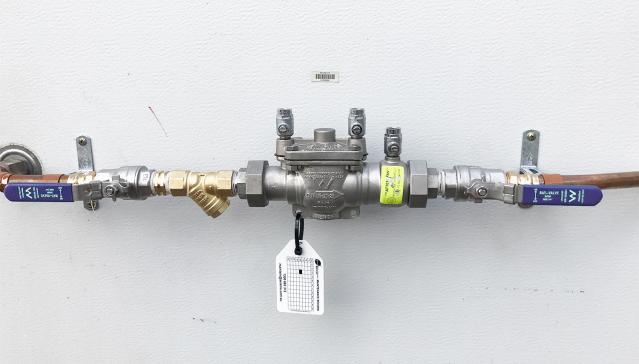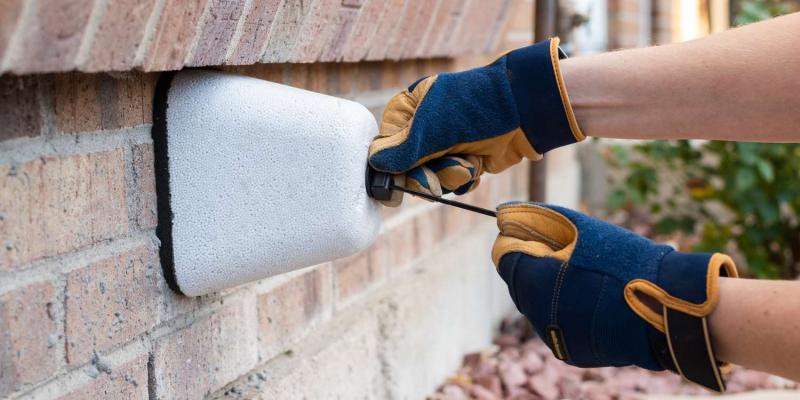The Backflow Prevention and Cross-Connection aims to safeguard public drinking water and protect the health and safety of our customers from contamination by isolating any potential cross-connections that could backflow into the public water supply.
Texas Water and its customers must protect the public water supply by adhering to the rules and regulations set forth by the Texas Commission on Environmental Quality (TCEQ).
Texas Water has partnered with Vepo, LLC to allow for the online submission of Backflow Prevention Assembly Test and Maintenance Reports and Customer Service Inspection Certificates.
The tester or inspector will enter all information directly into the online password-protected system provided by Vepo, LLC. Testers and inspectors will no longer be able to submit paper reports directly to Texas Water.
Cross-Connection Control & Backflow Prevention Manual
Customer Service Inspections
Customer Service Inspections (CSI) are performed to ensure no direct connections between the public water supply and a potential source of contamination or a private water system that is not protected by either an air gap or an appropriate backflow prevention assembly.
A Customer Service Inspection is required before adding a new home to our water system. Since water meters are installed during construction and a proper CSI cannot be conducted, Texas Water requires a CSI to be completed within 12 months of water meter installation or before a new customer takes ownership of the new home.
Finding or Becoming a Registered Inspector
All Customer Service Inspectors (CSIs) are required to register with Vepo, LLC. Upon registration and verification of license and insurance, the inspector will be added to the approved list of Customer Service Inspectors.
Find a Customer Service Inspector registered* to work in your water service company.
*This list is not an endorsement by Texas Water Company but is provided by the TCEQ of the state-licensed inspectors in our area. Any questions or complaints about their licensed inspectors should be directed to the TCEQ.
Backflow Prevention
Backflow prevention assemblies are required for all connections that may present a potential source of contamination of the public water system to protect the water system. Backflow prevention assemblies must be tested upon installation and annually after that—cross-connections that could backflow into the public water supply.
Click here to learn about water pressure and Pressure Reducer Valve recommendations in the service area.
Finding or Becoming a Registered Tester
All Backflow Prevention Assembly Testers (BAPTs) are required to register with Vepo, LLC. Upon registration and verification of license, insurance, and test for accuracy reports, the tester will be added to the approved list of Backflow Prevention Assembly Testers.
Note: Backflow prevention assemblies on fire protection sprinkler systems are required by the State Fire Marshall to be tested and/or repaired by a BPAT who is a full-time employee of a fire protection sprinkler company that is licensed with the State Fire Marshall's Office.
Find a BPAT registered* to work in your water service company.
*THIS LIST IS NOT AN ENDORSEMENT BY TEXAS WATER COMPANY BUT IS PROVIDED BY THE TCEQ OF THE STATE-LICENSED INSPECTORS IN OUR AREA. ANY QUESTIONS OR COMPLAINTS ABOUT THEIR LICENSED INSPECTORS SHOULD BE DIRECTED TO THE TCEQ.
Download a Quick Start Guide with information on how to become a registered BPAT.
Enforcement
Suppose a customer fails to comply with TCEQ rules and regulations and adhere to Texas Water Cross-Connection Control and Backflow Prevention Program. In that case, Texas Water shall, at its option, terminate service to protect the public water supply. Any expenses associated with this enforcement shall be billed to the customer.
For further information, please get in touch with Texas Water.
Additional Information
Texas Water's Cross-Connection Control and Backflow Prevention Manual covers definitions, responsibilities, procedures, and enforcement related to Customer Service Inspections and Backflow Prevention. All Backflow Prevention Assemblies shall be installed under Texas Water Standard Details.
To ensure that the backflow prevention assembly is by TCEQ regulations, refer to the Assessment of Hazards and Selection of Assemblies in the Manual or contact Texas Water.
For More Questions:

